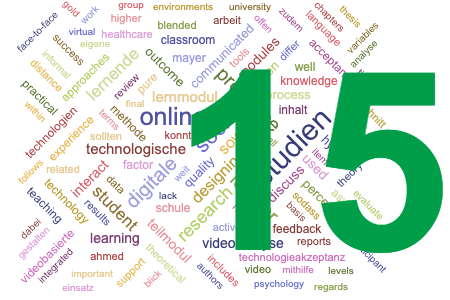Technologieakzeptanz von virtuellen Lern- und Arbeitsumgebungen
Keywords:
Erwachsenenbildung, Technology Acceptance Model, adult education, betriebliche Bildung, company education, e-learning, immersive virtuelle Lernumgebungen, virtual realityAbstract
In the context of digitalisation and Industry 4.0, the use of innovative technologies in learning and working processes is associated with multiple potentials. In particular, immersive virtual environments (Virtual Reality, IVR) offer promising possibilities to support learning and working. IVR refers to computer-generated representations that are three-dimensional and interactive. Users can literally "immerse" themselves in a virtual environment via natural user interfaces. However, the state of current research as outlined in the thesis shows that only a little is known about the technology acceptance of IVR and the corresponding promoting and inhibiting factors. Technology acceptance is understood as users‘ positive adoption decision of an innovation (Simon, 2001). Therefore, the central research aim of the present work is to generate descriptive and explanatory knowledge on the technology acceptance of IVR among (potential) users. A theoretical framework on digitalisation processes, virtual reality technologies and technology acceptance, as well as an overview of the corresponding empirical state of research introduce the topic. The thesis includes four empirical studies to investigate the technology acceptance of IVR. In the first study, the theoretical assumptions of the Technology Acceptance Model (TAM) are empirically tested with regard to the technology acceptance of IVR. The TAM assumes that the intention to use information technologies is mainly influenced by perceived usefulness and ease of use. In this context, study 1 investigates technology acceptance and the user-related factors of age and previous experience with the technology in the context of a quantitative questionnaire survey with (potential) users of IVR. The second study focuses on the technology acceptance of a virtual sales room and, in addition to the core factors of the TAM, includes the social norm and perceived behavioural control, as well as the organisational factors of support by management, user training and user support. Data collection is also carried out by means of a quantitative questionnaire. In the third study, a virtual learning application for operator training is formatively evaluated with regard to technology acceptance, user experience and the learning transfer of virtually learned action knowledge to real activities by means of a qualitative video analysis. The fourth study aims to identify further user-related, organizational and, in particular, technology-specific facilitating and inhibiting factors within qualitative interviews with experts. The results show that the TAM can also be used as a suitable basis for investigating the technology acceptance of IVR and that perceived usefulness and ease of use have an influence on the intention to use (Study 1). Similarly, perceived behavioural control influences usage intention and organisational factors are positively related to TAM factors (Study 2). It is made clear that the study of innovative technologies must be accompanied by novel methodological approaches in research efforts (Study 3). Further user-related, organisational and technology- specific factors influencing technology acceptance are identified for the use of IVR in teaching- learning contexts (Study 4). In summary, practice-relevant aspects for increasing the technology acceptance of IVR can be derived on the basis of the research results and taking into account the limitations.Downloads
Published
2022-11-22
Issue
Section
Dissertations



